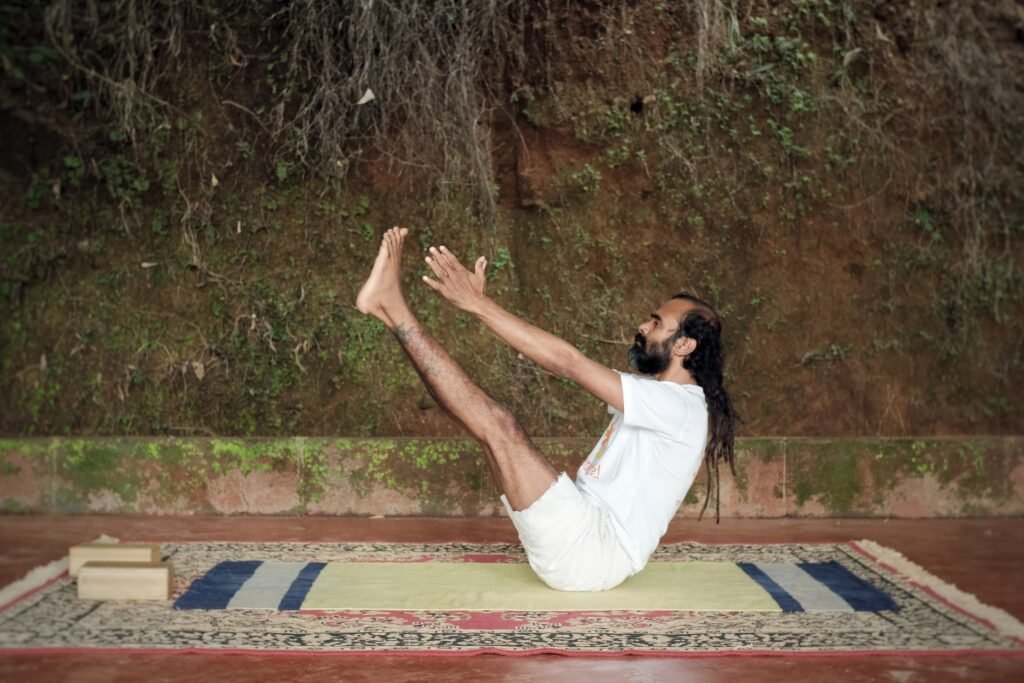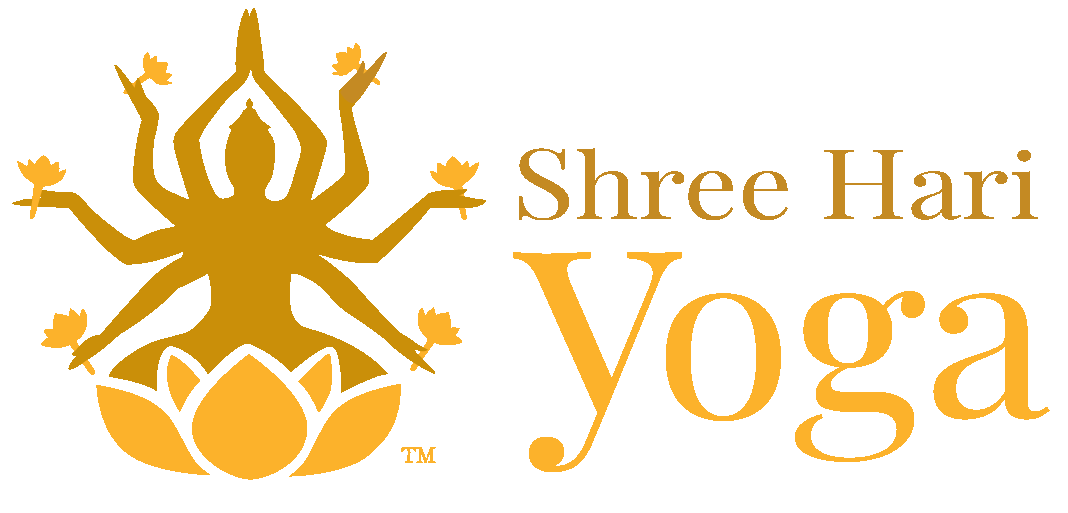
Full Boat Pose’s English name comes from the Sanskrit words paripurna, which means entire, full, or complete, Nava, which means boat, and asana, which means pose. Stability in this posture can help you settle down and align your body, mind, and emotions despite the effort and numerous acts required.
STEPS FOR BOAT POSE YOGA:
- Root to Rising
Students frequently place too much emphasis on how a yoga pose looks from the outside. For instance, when performing the boat pose, people become so focused on how high they can elevate their legs that they become completely disoriented.
Pay close attention to how your pelvis is positioned on your mat as you concentrate on the floor.
The floor is one of the most practical props you have at your disposal. Start the boat pose while seated with your feet flat on the ground. So that your tailbone doesn’t protrude under your body, roll the flesh of your buttocks back. To stabilize the body, press the thigh bone heads into the mat.
You can locate additional axial extension in your spine by pressing your feet into the ground and lifting through your mouth’s roof.
- Position a block in between your thighs
One of the most frequently misunderstood muscles in the human body is the hip flexor.
Four of your five adductor muscles in your inner thighs support hip flexion. Place a block between your thighs “as high as socially permissible” while keeping your knees and feet flat. You’ll notice more control over your body when flexing your hip joints later if you lightly squeeze the block with your thighs. Synergism is the term for this. To bend your hips, you must use more muscles than just one, which results in a stronger effect.
- Keep your feet rooted to the ground
You can now start practicing the position. Keep your hands on your shins, knees bent, block in between your thighs, and feet firmly planted on the mat. Start leaning back until your elbows are straight, but don’t change the curve of your spine. Pause now.
Your hip flexors will start to tense up as soon as you lean back with your hands on your shins. They are eccentrically becoming longer while being contracted (lengthening while strengthening). Your hip flexors are working incredibly hard to maintain this pointed V-shape in your body even though your feet are on the ground.
The best location to focus on your breath is here. Bring your breath back into your body and proceed to a more challenging form of paripurna navasana.
- Touch your mat with your fingertips
Put your fingertips on the mat once you’ve gained the strength to lean back with straight arms and a steady breath. Just press your fingertips into the carpet firmly without altering the contour of your body. Your shoulder blades will be forced into your back body; as a result to help maintain a raised chest.
Proprioception can also be developed by keeping your fingertips on your mat. Numerous nerve endings in your fingertips provide your brain with information about where your body is in space. If you turn your brain to the floor, you’ll depend less on your eyes and mirrors to comprehend your posture.
- Keep your knees bent
Keep your knees bent until you’re ready to float your shins up. Maintain a long spine, lift your chest, and only raise your ankles as high as your knees. You’ll note that compared to when your feet were on your mat, this puts a lot more strain on your hip flexors.
In paripurna navasana, gravity is a formidable foe since it seeks to pull your body downward. The leg lever is longer and heavier when the legs are straight. You can reduce gravity’s effects while maintaining the boat’s full intensity by keeping your knees bent.
CAUTION:
- Keep your chest wide to prevent rounding in your shoulders and upper back.
- Pay attention to maintaining your shoulders back.
- Keep breathing throughout the task.
VARIATIONS:
- Test your balance by rocking your body from side to side while in the pose, moving your arms and legs.
- Experiment with different ways to hold a block, such as holding it between your thighs or your palms while elevating your arms for added difficulty.
CONTRAINDICATIONS:
- Naukasana, also known as the Boat Pose, should not be performed if you have low blood pressure, a severe headache, a migraine, or a recently diagnosed with certain chronic diseases or spinal disorders.
- This pose must be avoided if you have asthma or heart disease.
- Avoid attempting this yoga pose if you have a weak stomach or are having diarrhea.
- Women should avoid boat pose (Naukasana) during pregnancy and the first two days of their menstrual cycle.
BENEFITS OF BOAT YOGA:
- Stabilizes the base chakra:
At the spine’s base is an energy point called the Muladhara. The Root chakra is a center of aspirations, virtues, self-connection, and bodily identity. A person who has an unbalanced root chakra feels down and worn out.
The boat pose is the finest yoga posture for balancing the root chakra and assisting practitioners in developing a divine connection with themselves.
- Harmonization of sacral chakra:
In the abdomen is where you’ll find the sacral chakra. The sacral chakra is the home of our ego, emotions, and morals. When it is out of balance, we feel sick and hopeless.
The boat yoga pose balances the sacral chakra and actively develops the physical center. We are less vulnerable to negativity when we feel assured, in control, and courageous.
- Strengthening of the abdominal muscles
The yoga pose Navasana is effective for toning and strengthening the abdominal muscles. A person can do daily physical tasks more easily and delay the onset of various health issues, such as osteoporosis and back discomfort, by developing strong core muscles.
Additionally, the boat stance is a natural way to get six-pack abs.
- Efficient weight loss
The Boat Yoga pose helps to stretch, compress, and relax the abdominal muscles, which aids in the burning of extra belly and waist fat. It is a yoga pose that works well for a tall, lean body.
- Helps digestion
Consistently performing navasana improves digestion by improving the efficient secretion of gastric juices and stimulating the peristaltic movement of the intestines.
- Healthy Kidneys:
The kidneys filter and control the blood, produce red blood cells for the body, and much more.
The boat pose increases kidney function, lowers blood pressure, and increases the chance of developing polycystic kidney disease.
- Energizes the body
The boat pose energizes the entire body and keeps a yogi in shape and active by eliminating toxins from the body, improving the operations of internal organs, including the kidneys and digestive system, and regulating the hormonal system.
FAQ:
- What does the yoga pose Naukasana mean?
The Sanskrit words Nauka, which means boat, and asana, which means posture or pose, combine to form naukasana, or the boat pose. Your body becomes the shape of a boat in this yoga pose.
- Why do I get lightheaded after yoga?
Vertigo, improper yoga poses, practicing too quickly, or dehydration can all cause dizziness.
- When Should Navasana be performed?
Navasana practitioners must initially hold the position for 10 to 20 seconds. They can gradually extend the duration of this pose to one minute as they gain more experience.
